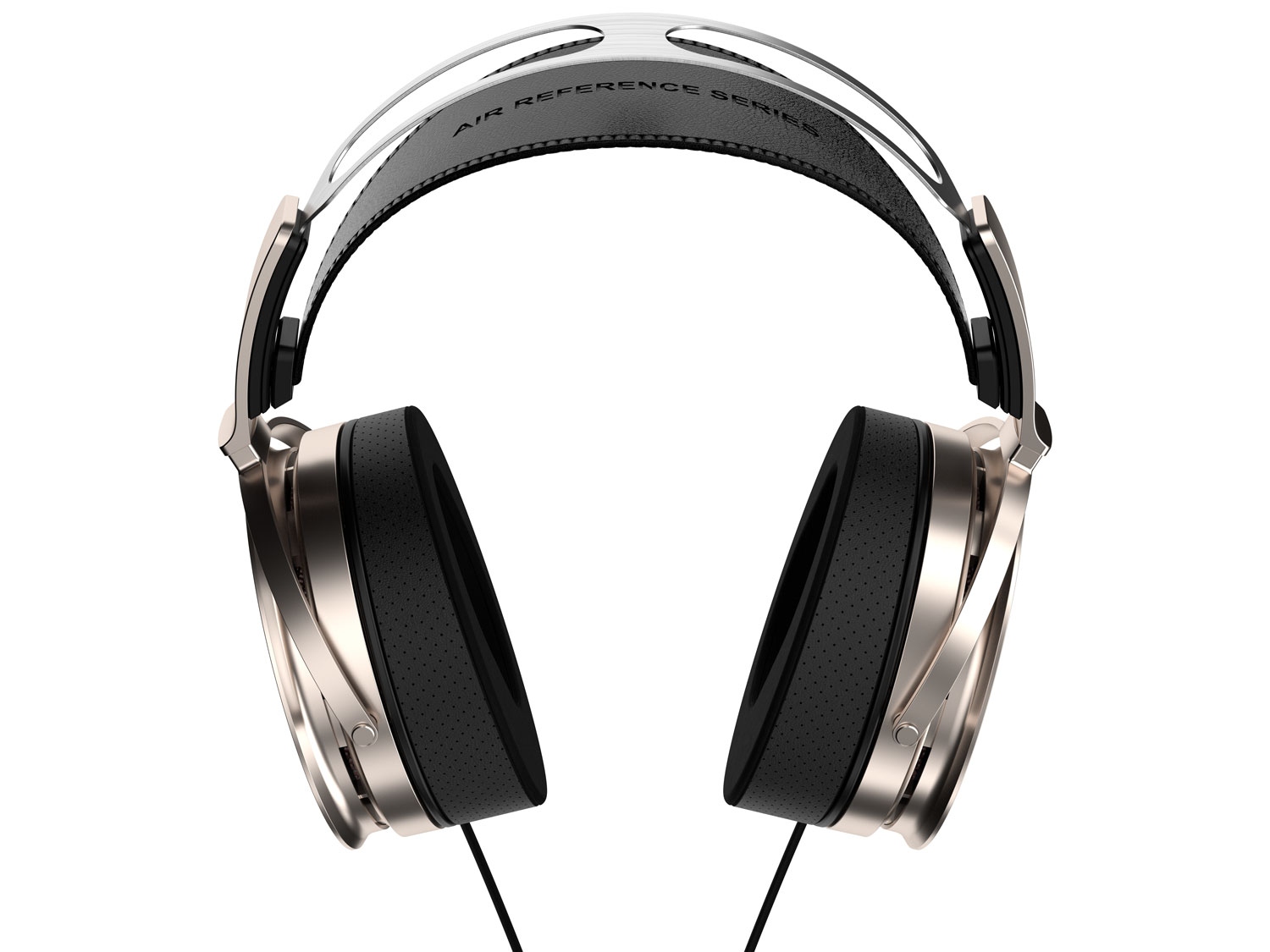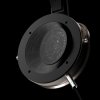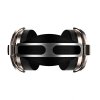Looks mostly fixable with EQ, and the distortion is impressively low. Price seems reasonable. The angled drivers seem interesting, does anyone know how much these ones are angled? Not a knock out the park from the measurements, but ok.
-
WANTED: Happy members who like to discuss audio and other topics related to our interest. Desire to learn and share knowledge of science required. There are many reviews of audio hardware and expert members to help answer your questions. Click here to have your audio equipment measured for free!
- Forums
- Audio, Audio, Audio!
- Headphones and Headphone Amplifier Reviews
- Headphone & IEM Reviews & Discussions
You are using an out of date browser. It may not display this or other websites correctly.
You should upgrade or use an alternative browser.
You should upgrade or use an alternative browser.
Aune AR5000 Headphone Review
- Thread starter amirm
- Start date
Well, if you give a +10dB bass boost and then assume the bass is following the green 114dB line in the distortion graph then that's still ok distortion wise, and in this scenario 1kHz will be sitting at 104dB which is plenty plenty loud enough, in fact I don't think you can run the headphone like that without going deaf. Most I ever have my headphones is about 86dB at 1kHz, and then obviously you've got your music which will sit below that by a large margin as it's not a 0dBFS sine wave. So I can't imagine listening at a level where a 0dBFS 1kHz sine wave is at 104dB!Since the bass region needs close to a +10db boost in the sub-bass area (which already has the highest distortion) to match the Harman target I suspect it's not that unlikely that bass distortion will be audible after EQ.
Interesting! What headphones have you got currently (apart from your HD560s & HE400se)? Do you use Oratory EQ on them?Just bought a pair. Excited to try it.View attachment 335802
Soria Moria
Addicted to Fun and Learning
I have tried to find information about it online but I can't. But here's a picture of the driver as well as a picture of the headphones from top so you can see that the earpads are angled as well. In total it's quite an angled design.The angled drivers seem interesting, does anyone know how much these ones are angled?
Attachments
180 degrees for the widest sound!I have tried to find information about it online but I can't. But here's a picture of the driver as well as a picture of the headphones from top so you can see that the earpads are angled as well. In total it's quite an angled design.
I currently have HD660S, I wonder if these would be better…
Yes. Wonder how they compare to HD800S. Regarding ”spatial” impression it is mostly likely related to phase differences (dependent on angle and distance deiver to ear). Should be possible to process in the mix as well. There was one post about this doing it in the mix to get sound ”outside” the headphones.Looks mostly fixable with EQ, and the distortion is impressively low. Price seems reasonable. The angled drivers seem interesting, does anyone know how much these ones are angled? Not a knock out the park from the measurements, but ok.
- Thread Starter
- #68
My memory of HD800s is long gone but from the bit I recall, it was better than this headphone.
Yes, so angled drivers and then on top of that angled pads, that seems quite unique, I can't recall offhand other headphones going for both strategies, and the first pic showing the angled drivers seems that it's angled quite aggressively. Hmm, that is interesting, I wonder just how much angling can influence soundstage. It'll be interesting to see what you think to them, and how you find the soundstage vs your other headphones.I have tried to find information about it online but I can't. But here's a picture of the driver as well as a picture of the headphones from top so you can see that the earpads are angled as well. In total it's quite an angled design.
EDIT: although the angling of the pads looks like it's in the wrong direction, angled upwards, so that won't add to the angling of the drivers, as the angling of the drivers is to simulate more "coming from front" sound, but the angling of the pads there is instead to do with getting a good seal based on the geometry of the earcup mounting system I would wager:

EDIT#2: perhaps the pads are angled to the front as well as upwards, as your previous pic does seem to suggest a little angling to the front, but I can't be sure.
Last edited:
There's the Smyth Realiser, Impulcifier Project, and also "generic HRTFs" related to Soundblaster SBX for instance, so it's certainly possible to process out of head experiences, just the best results are the first two where you do actual measurements of both speakers and headphone with in ear mics so as to capture your own HRTF. Perhaps the seemingly extreme angling of the drivers in the Aune AR5000 will help use some of own HRTF, which would be associated with just the ear rather than the whole head of course, so maybe the soundstage is good in these headphones in comparison to most others.Yes. Wonder how they compare to HD800S. Regarding ”spatial” impression it is mostly likely related to phase differences (dependent on angle and distance deiver to ear). Should be possible to process in the mix as well. There was one post about this doing it in the mix to get sound ”outside” the headphones.
The way I understand it is that the drivers would be angled to "point into the ear from front" (as much as possible within the confines of the headphone design) so as to mimic more closely the fact that when listening to speakers the sound source is from in front of you. I think when drivers are angled like that I think it expresses an element of the ears "frontal HRTF" that wouldn't be expressed if they weren't angled and were instead just pointing into your ear "flat" from the side of your head. I think it's more about the frequency response effects received at your eardrum.Do you mean that phase differences are directly resulting form the angling of the drivers? If I do the maths taking into consideration the small diameter of a HP driver, I doubt our ear can perceive the phase difference between say 2 opposite points on the periphery of the driver (but I could be wrong!). I suspect the angling of the drivers is more about impacting the reflections inside the ear / HP cavity, an indirect effect on the phase / intensity of the reflections, "interpreted" by our brain as spatial clues...
Why would the angling direction matter? If the "spatial" clues result from the phase / intensity levels coming from secondary reflections, it's all about controlling these reflections in relation to the headphones cavity design. Any "angle" could theoretically work, depending on the detail design of the HP cavity...
Yes, the HD800(S) has angled drivers.. but I wonder if its "annular" driver is the more important (overlooked) feature: since the central section of the driver does not emit sound, you don't get that direct "beam" right into your ear canal. Again, just a theory, but Sennheiser hinted the HD800 was closer to how we perceive sounds in the real world--a more realistic "balance" of direct/reflected sounds giving the HD800 its "spatial" qualities. The angled driver may be the obvious element of design, but I wonder whether it is actually the less important element as compared to the annular driver.
See this video. I have not experimented with it myself though.Do you mean that phase differences are directly resulting form the angling of the drivers? If I do the maths taking into consideration the small diameter of a HP driver, I doubt our ear can perceive the phase difference between say 2 opposite points on the periphery of the driver (but I could be wrong!). I suspect the angling of the drivers is more about impacting the reflections inside the ear / HP cavity, an indirect effect on the phase / intensity of the reflections, "interpreted" by our brain as spatial clues...
Why would the angling direction matter? If the "spatial" clues result from the phase / intensity levels coming from secondary reflections, it's all about controlling these reflections in relation to the headphones cavity design. Any "angle" could theoretically work, depending on the detail design of the HP cavity...
Yes, the HD800(S) has angled drivers.. but I wonder if its "annular" driver is the more important (overlooked) feature: since the central section of the driver does not emit sound, you don't get that direct "beam" right into your ear canal. Again, just a theory, but Sennheiser hinted the HD800 was closer to how we perceive sounds in the real world--a more realistic "balance" of direct/reflected sounds giving the HD800 its "spatial" qualities. The angled driver may be the obvious element of design, but I wonder whether it is actually the less important element as compared to the annular driver.

Closed back headphones for mixing
Hi all, I have relied on near field monitors for mixing for the past few years, but due to a change in circumstances I will need to do much more work on headphones (and they need to be closed-backs, unfortunately). My budget is around 300USD. Ideally, I'm looking for cans that will fulfill both...
 www.audiosciencereview.com
www.audiosciencereview.com
The HD800S is also roughly 5X the price of this Aune. I tried the 800S a couple of times and liked them, but that's a hefty premium.My memory of HD800s is long gone but from the bit I recall, it was better than this headphone.
- Thread Starter
- #75
That it it is. It also doesn't look nice.
Yes… the one with a perfect frequency response for you!Is there really any headphone that doesn't improve with EQ? I've never heard anyone.
Joke aside (sorry!), the whole point of EQ is to fine-tune the FR to your liking… If it doesn’t improve, it means that you are either EQ-ing wrong (as in the wrong direction or not fine enough) or, you are trading other audio characteristics—for example, increasing distortion beyond an acceptable threshold (which is also somewhat personal)… or it’s already perfect (unlikely but possible).
When I saw their new dacamp Aune S17 Pro (https://cdn02.plentymarkets.com/dvw13795n3e0/frontend/Aune_S9c/Aune-S9c-DAC-HeadphoneAmp.jpg) for the first time I though headphones on the photo is Susvara, but it is actually new model from Aune. It looks almost identical from the distance.
- Joined
- Dec 23, 2019
- Messages
- 7
- Likes
- 42
Thanks!Looks nice! Good showing, @auneaudio
In terms of speaker EQ we always say that you should leave EQ well alone in areas where the group delay is messy. When it comes to headphones this rule seems to go out the window. What gives?
What happens in the messy group delay area after EQ in the same area?
What happens in the messy group delay area after EQ in the same area?
- Thread Starter
- #80
I have no such rule. We say that non-minimum-phase areas can potentially be problematic. Even there, I try EQ and see what happens. Automated EQ systems like Dirac do the same.In terms of speaker EQ we always say that you should leave EQ well alone in areas where the group delay is messy.
Similar threads
- Replies
- 93
- Views
- 24K
- Replies
- 121
- Views
- 31K
- Replies
- 88
- Views
- 28K
- Replies
- 295
- Views
- 69K


